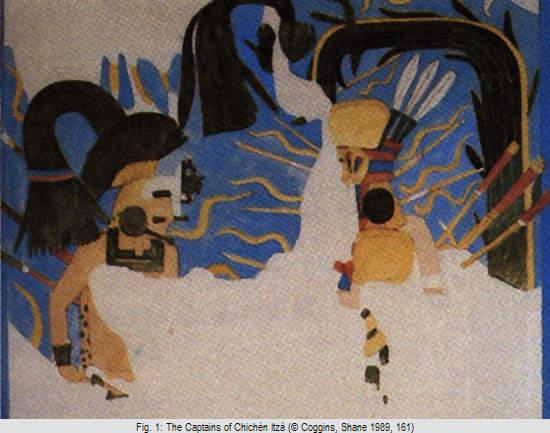
K'ak'upakal was a ruler of Chichén Itzá during the apogee of the functioning of the south sector of urban center. The government of this character coincides with the end of a Katún Ahau (period of 20 years) on Chichén Itzá, which is when the changes and new governors come. The first date that alludes to the character is the year of 859 d.C., exactly when the Katún 1 Ahau starts, and goes until the year of 889 d.C. The last reference to K'ak'upakal on Chichén Itzá is the year of 890 d.C., one year after the Katún 1 Ahau has ended. This calendaric evidence shows that a change of government took place, which culminates on the control of the urban center by a part of a new social group we suggest represents Captain Serpent. This would explain why the name of Captain Serpent is not registered in the epigraphy of the urban center. The new social group preferred a new symbolic message: the representation of plumed serpents as a metaphor of the power shift and as an allusion to the new ruler.
Our proposal is that the profusion of the warlike imagery in the archaeological site could refer to the conflict set off for the sovereignty of a new social group. We think that this conflict was well carried out by the new government, formed by powerful and prominent elite in comparison to its predecessor, which didn't destabilize the new regime as the old lineage could maintain its power. It is important to point out here the widest symbolism that the plumed serpent was able to attain under the government of the Captain Serpent. In this regard, let's examine a peculiar image that is found on a column of the Temple of the Warriors: a serpent with horns, unique in the imagery throughout the archaeological site (fig. 4-5). The serpent of the image belongs to the Crotalus cerastes species, which is not found in Yucatán. Its habitat corresponds to the States of Lower California and Sonora, in Mexico, and to the southwest of the United States, on States like California, Arizona and Nevada, being the viper very poisonous (fig. 6). This representation could associate itself to the aggressive character of the new ruler of the city, both for the inhabitants of Chichén Itzá and the dignitaries that visited it. Furthermore, this observation indicates that the mayas too were biologically acquainted of the different species of serpents, being them found on the region or on other ones distant from Yucatán.
What we want to highlight, and we think should be investigated with greater dedication, is that the imagery of the two Captains related to different places and a new system of government, combined with the archaeological evidence, capture the moment of social transformation or "evolution" of a cazigazgo society (the south sector of archaeological site) towards the formation of a State (the Great Leveling) (Navarro, 2007). However, the theme requires more study.
Bibliography
We propose herein a new interpretation for the relation between the two Captains represented on the Great Leveling of Chichén Itzá, which leads us to understand the new way of organizing the space in the urban center. These characters, generally, were represented facing one another, and holding weapons, which gives the impression of a combat. Thus, this confrontation has been interpreted in investigations under many different approaches, being the main one the arrival of foreign groups (the famous toltecas) to Chichén Itzá, whose invasion led to the domain over the mayas that inhabited the city.
Lincoln (2004) asserts that the two new characters represent a duality that reflects a double government similar to the one of the mexicas, whose executive power included a laic ruler (the Captain Solar Disc) and a great clergyman, cihuacoatl, (the Captain Serpent).
Our interpretation is different from the ones presented previously. First, there are no concrete iconographic elements that lead to the conclusion that the two captains are confronting one another bellicosely. In fact, the weapons that are shown in the images make up the individual dressings of the two Captains. At no time these weapons touch the body of the opponent or are in a position that could refer to a direct confrontation.
We think that such confrontation refers to a message, to a narrative program that emphasizes the transference of power from K'ak'upakal to a new ruler, the Captain Serpent (Kukulcán), personified by two royal characters during the act of enthronement of the new ruler, or instead, the transference of power from one to the other.

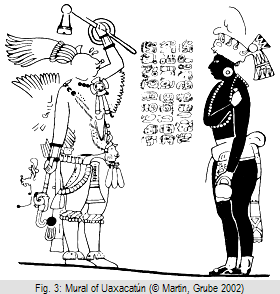 Let's see how the actions undertaken by the two Captains are characterized. Let's move back to the imagery of the first wooden lintel of the Superior Temple of the Jaguars (fig. 2). On the west side, the Captain Solar Disc points his átlatl, with his right hand, to Captain Serpent, by way of salutation. The latter, for his part, takes his propeller, with his right hand as well, up to his chest, in a gesture of respect. With this gesture, the Captain Serpent recognizes the importance of the Captain Solar Disc in the social context of the urban center. Under this context, more than confronting one another, the two Captains use their weapons as a metaphor of salutation and a gesture of respect.
Let's see how the actions undertaken by the two Captains are characterized. Let's move back to the imagery of the first wooden lintel of the Superior Temple of the Jaguars (fig. 2). On the west side, the Captain Solar Disc points his átlatl, with his right hand, to Captain Serpent, by way of salutation. The latter, for his part, takes his propeller, with his right hand as well, up to his chest, in a gesture of respect. With this gesture, the Captain Serpent recognizes the importance of the Captain Solar Disc in the social context of the urban center. Under this context, more than confronting one another, the two Captains use their weapons as a metaphor of salutation and a gesture of respect.
Although not very common in the iconographic representation, similar images in which are evidenced characters "saluting" or mutually "respecting one another" are found in the maya area. The example we offer comes from a mural of Uaxactún (fig. 3). In this case, differently from Chichén Itzá, the epigraphy corroborates the act of salutation between the two individuals. In the site of Yaxchilán, the last monument of Jaguar Bird IV is dated to 768 d.C., and one can see that he is exchanging "winged staffs" (Grube and Martin, 2002) with his brother in law Great Skull. According to Simon and Grube (2002), on the Estela 11, Jaguar Bird declares to have obtained the approbation of his father to rule. Great Skull is referred as yichaan ajaw, "uncle of the master", bringing to mind that he is the heir of Jaguar Bird, Chel Te' Chan K'inich, and appears in front of the sovereign.
A problem that lacks to be dealt with is the recurrence of the conflict in the imagery of Chichén Itzá. We think that despite of not having happened a belligerent confrontation to establish the new social order, the alteration of dominant social group could generate an internal conflict in the urban center. Many investigators have dealt with the theme of the conflict on the imagery of archaelogical site. Miller (1978), Coggins (1994), Stuart (1997), Schmidt (1998), Schele y Freidel (1999) y Florescano (2004) think that the conflict in the art of Chichén Itzá reveals the process of the toltec invasion in the urban center. Greene Robertson (1994) considers that the conflict is internal, and that the art represents the several groups that ruled Chichén Itzá. Kurjack (1992) talks about the implantation of an army due to the growth of the population in Yucatán during the Terminal Classic, being that growth the cause of the conflicts. Well now, besides the imagery, we have no material evidence of this possible conflict.
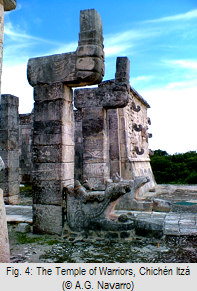
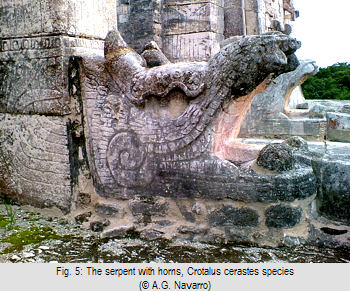
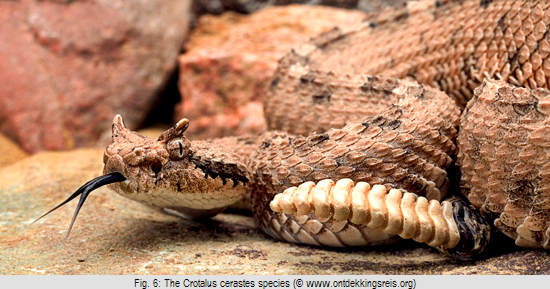
In this way, the Captains of Chichén Itzá evidence a social dynamics marked by deep political changes in the urban center of Chichén Itzá during the Classic Terminal. The "confrontation" between the Captains Serpent and Solar Disc is the metaphor of the government shift that culminated in the establishment of a new social order which was perpetuated in the collective memory of the society through its iconographic message.
C.C. Coggins, O.C. Shane III, El Cenote de los Sacrificios. Tesoros mayas extraídos del Cenote Sagrado de Chichén Itzá, México 1989.
C.C. Coggins, A New Sun at Chichen Itza, Cambridge 1994.
E. Florescano, Quetzalcóatl y los mitos fundadores de Mesoamérica, México 2004.
M. Greene Robertson, The Iconography of 'Isolated Art Styles', that are 'Group Supported' and 'Individual Supported' Occuring at Chichén Itzá and Uxmal, in: H.J. Prem, ed., Hidden Among the Hills. Maya Archaeology of the Northwest Yucatan Peninsula, Möckmühl 1994, 197-211.
E. Kurjack, Conflicto en el arte de Chichén Itzá, Mayab 8, 1992, 88-96.
Ch.E. Lincoln, Structural and Philological Evidence for Divine Kingship at Chichén Itzá, Yucatán, México, in: H.J. Prem, ed., Hidden Among the Hills. Maya Archaeology of the Northwest Yucatan Peninsula, Möckmühl 1994, 164-196.
S. Martin, N. Grube,Crónica de los Reyes y Reinas Mayas. La Primera Historia de las Dinastías Mayas, México 2002.
A.G. Miller, 1978 Capitanes del itzá: evidencia mural inédita de Chichén Itzá. Estudios de Cultura Maya 11, México 1978, 121-153.
A.G. Navarro, Las serpientes emplumadas de Chichén Itzá: distribución en los espacios arquitectónicos e imaginería, Tesis de Doctorado, México 2007.
L. Schele, D. Freidel, Una Selva de Reyes. La Asombrosa Historia de los Antiguos Mayas, México 1999.
P.J. Schmidt, Contacts with Central Mexico and the Transition to the Postclassic: Chichén Itzá in Central Yucatán, in: P.J. Schmidt, M. De La Garza, E. Nelda, eds., Los mayas, Londres 1998, 427-449.
D. Stuart, Kinship Terms in Maya Inscriptions, in: M.J. Macri, A. Ford, eds., The Language of Maya Hieroglyphs, San Francisco 1997, 1-11.
![]() © Alexandre Guida Navarro
© Alexandre Guida Navarro
e-mail: altardesacrificios@yahoo.com.br
This article should be cited like this: A. G. Navarro, Kakupakal and Kukulcan: Captains of Chichén Itzá, Forum Archaeologiae 56/IX/2010 (http://farch.net).